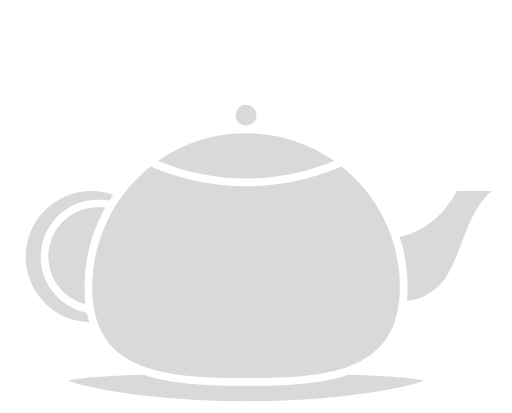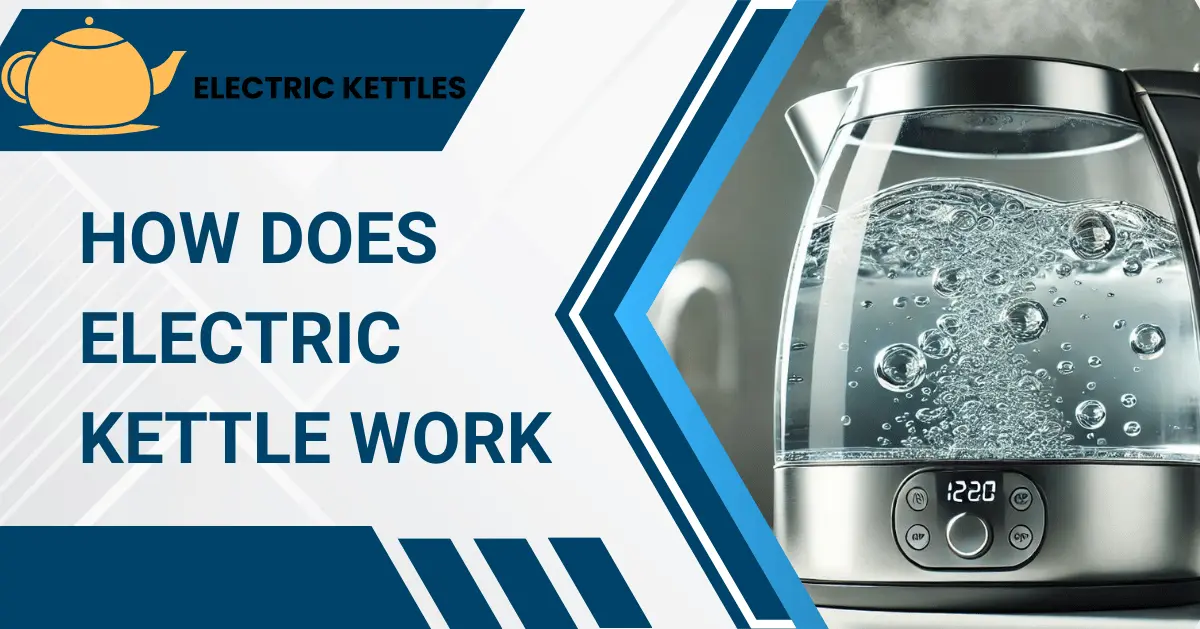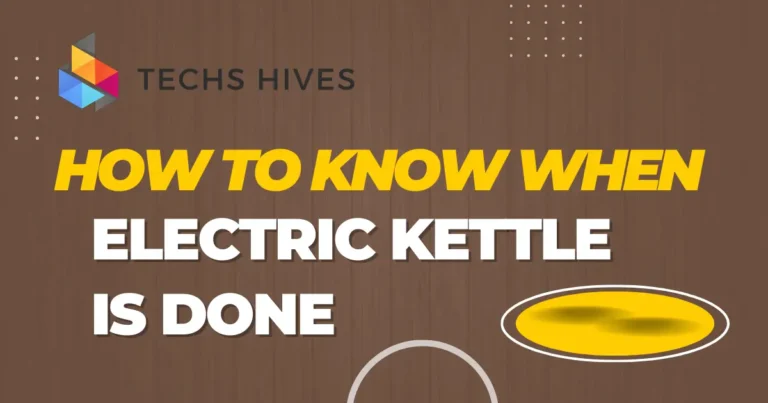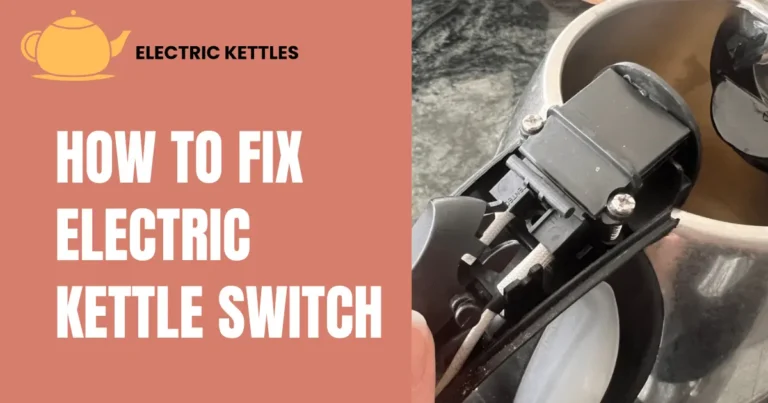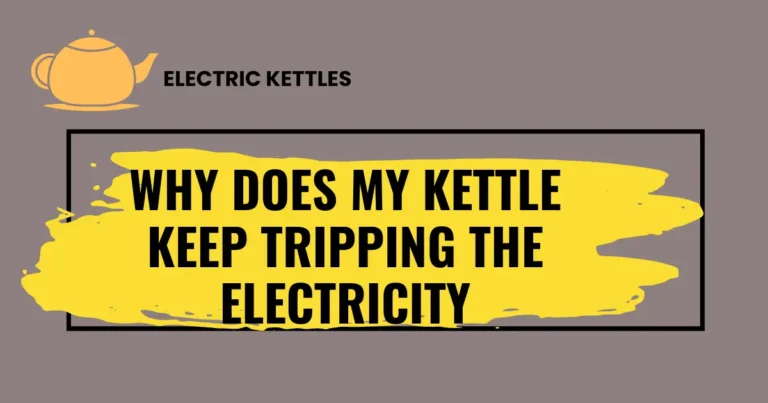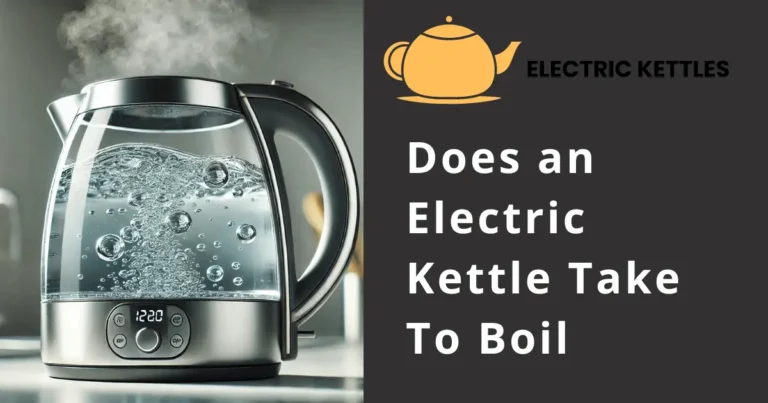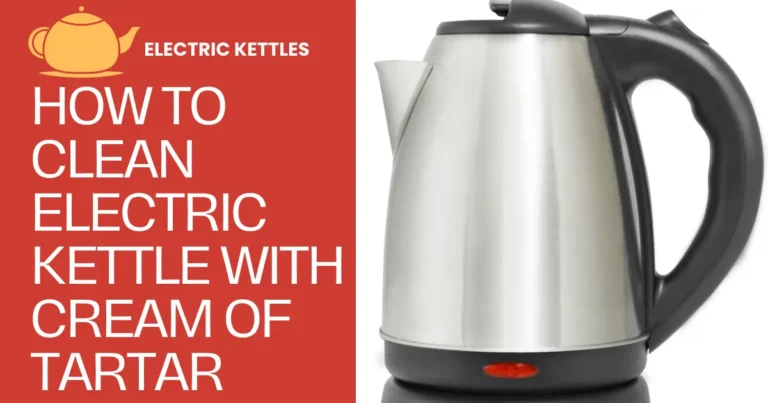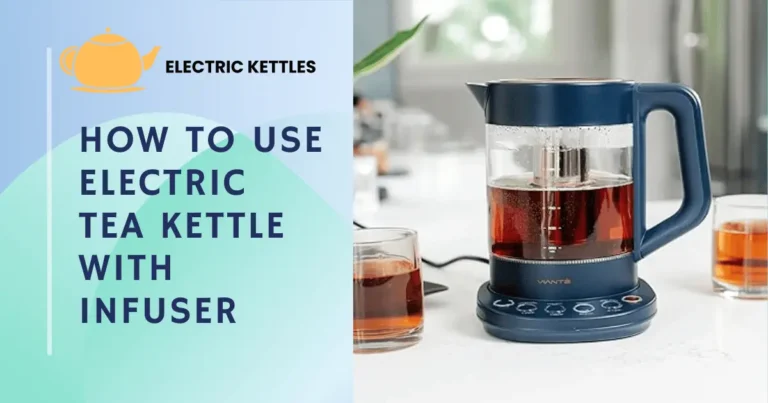How Does Electric Kettle Work
An electric kettle is a kitchen appliance used to quickly boil water. It uses electricity to heat water through a heating element at the base. Electric kettles are faster than traditional stovetop kettles. They are easy to use, energy-efficient, and have automatic shut-off features. This makes them a popular choice for boiling water.
People use them at home, in offices, and even in dorm rooms. They are not just for making tea or coffee. They are also great for preparing instant noodles, soups, and other quick meals. Their convenience and speed make them a favorite in many households.
Table of Contents
Components Used in Electric Kettle
An electric kettle has several key components that make it work efficiently. The heating element is the most important part. It is usually made of metal and is located at the bottom of the kettle. When electricity flows through it, the element heats up, causing the water to boil quickly. This design makes electric kettles faster and more energy-efficient compared to traditional stovetop kettles.
The thermostat is another critical component that controls the temperature. It monitors the water temperature and turns off the heating element when the water reaches the boiling point. This prevents overheating and ensures safety during use. The auto shut-off mechanism is also a crucial feature. It automatically turns off the kettle if there is no water inside or when the water has boiled, which helps avoid accidents and saves energy.
The kettle also includes a base and power cord. The base provides a stable surface and connects to the electrical outlet, supplying power to the kettle. Most electric kettles have a water level indicator, which shows the amount of water inside, helping users measure the right quantity for boiling. Additionally, the lid and handle are designed to make the kettle easy to use. The lid prevents spills, while the handle remains cool to the touch, allowing safe handling and pouring of hot water.
Together, these components make electric kettles a safe, efficient, and convenient tool for boiling water quickly. They are designed to offer speed and ease of use while incorporating important safety features to protect users.
How the Heating Process Works
When the kettle is plugged into an electrical outlet and switched on, electricity flows through the heating element located at the base of the kettle. This element is made of metal, which quickly heats up as it conducts electricity. As the heating element gets hot, it transfers heat to the water in direct contact with it, causing the water temperature to rise.
As the water heats up, the temperature continues to increase until it reaches the boiling point, which is typically 100°C (212°F) at sea level. The thermostat inside the kettle constantly monitors the water temperature. Once the water reaches the boiling point, the thermostat detects this change. The thermostat then sends a signal to the kettle’s internal switch to cut off the electrical current to the heating element. This action stops the heating process, ensuring that the kettle does not continue to boil unnecessarily.
The kettle also has an auto shut-off mechanism that adds a layer of safety. This feature automatically turns off the kettle if it detects that there is no water inside or if the water has already boiled. This prevents the kettle from overheating and protects against potential damage. The entire process is efficient, allowing water to be boiled in a matter of minutes.
Step-by-Step Working Process
1. Filling and Preparing the Kettle
The process begins with the user filling the kettle with water up to the desired level, ensuring it does not exceed the maximum capacity. The kettle is then placed on its base, which is connected to a power source. Once the kettle is set on the base, the user turns on the power switch to start the heating process.
2. Heating the Water
When the power is turned on, electricity flows through the heating element located at the bottom of the kettle. The heating element quickly heats up, transferring heat to the water. As the heating element warms, the water temperature begins to rise steadily, preparing the water for boiling.
3. Temperature Monitoring and Shut-Off
A thermostat inside the kettle constantly monitors the water temperature. Once the water reaches the boiling point, the thermostat detects this change and triggers an internal switch to cut off the electrical current. This stops the heating process and ensures that the water does not continue boiling unnecessarily.
Safety Features of Electric Kettles
1. Automatic Shut-Off and Overheat Protection
Electric kettles have an auto shut-off mechanism that automatically turns off the kettle when the water reaches boiling point. This prevents the water from boiling continuously and wasting energy. The kettle also shuts off if there is no water inside, protecting it from damage. Additionally, most kettles include overheat protection, which cuts off power if the internal components get too hot, preventing potential accidents and extending the life of the appliance.
2. Dry-Boil Protection
Dry-boil protection is a key safety feature that prevents the kettle from operating without water. If the kettle is turned on when empty, this feature automatically turns off the heating element to prevent damage. This protection helps maintain the kettle’s performance over time by avoiding unnecessary wear on the heating element and other components.
3. Cool-Touch Design and Heat-Resistant Handles
Many electric kettles are designed with cool-touch exteriors and heat-resistant handles. The handles are made from materials that do not conduct heat, allowing safe handling and pouring of hot water. Some kettles also have insulated exteriors that remain cool even when the water inside is boiling, reducing the risk of burns and making the kettle safer to use.
Energy Efficiency and Power Consumption
Energy Efficiency of Electric Kettles
Electric kettles are designed to be energy-efficient appliances. They use a heating element that directly heats the water, which is more efficient than using a stovetop where heat is lost to the surrounding air. The compact size of electric kettles also means that they heat a smaller amount of water more quickly, reducing the overall energy needed. This direct heating method ensures that almost all the energy used goes into heating the water, minimizing waste.
Power Consumption
The power consumption of electric kettles varies depending on their design and capacity. Most electric kettles operate between 1500 to 3000 watts. Higher wattage kettles heat water faster, but they also consume more power. Despite this, the overall power usage is relatively low because electric kettles boil water quickly compared to other methods. The rapid boiling time means that the kettle is in use for a shorter period, contributing to lower energy consumption overall.
Comparing Energy Usage
When comparing electric kettles to other methods of boiling water, they are generally more energy-efficient. For example, using an electric kettle is typically more energy-efficient than boiling water on a gas stove or in a microwave. The direct contact between the heating element and the water ensures that energy is used efficiently, with less heat being wasted. This efficiency makes electric kettles a good choice for those looking to reduce their energy consumption.
Conclusion
An electric kettle is a convenient and efficient appliance for boiling water. It works by using a heating element to quickly heat the water. The thermostat and auto shut-off features ensure safety by stopping the kettle when the water boils or if it is empty. Electric kettles are designed to be energy-efficient, boiling water faster than other methods while consuming less energy.
With safety features like overheat protection and cool-touch designs, electric kettles offer a reliable and practical solution for everyday water heating needs. They are easy to use and maintain, making them a popular choice for many households.
